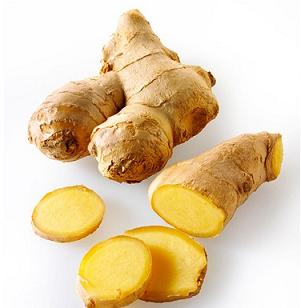 Rheumatoid arthritis and lupus are the main two of almost hundred types of arthritis and arthritis-related diseases. Most of these diseases have in common the breakdown of the body’s joints, combined with crippling pain and disability. Even though there are different reasons for someone’s developing RA or lupus, some scientists and natural health enthusiasts believe that certain foods could be accountable for many of the problems experienced. Should you decide to use food to deal with serious diseases, consult first with your physician.
Rheumatoid arthritis and lupus are the main two of almost hundred types of arthritis and arthritis-related diseases. Most of these diseases have in common the breakdown of the body’s joints, combined with crippling pain and disability. Even though there are different reasons for someone’s developing RA or lupus, some scientists and natural health enthusiasts believe that certain foods could be accountable for many of the problems experienced. Should you decide to use food to deal with serious diseases, consult first with your physician.
Ginger
Ginger is a culinary herb and a spice which has been used for hundreds of years for the treatment of inflammation in both Ayurvedic and Chinese medicine. Ginger could help reduce inflammation in the joints and muscles and relieve the pain connected with rheumatoid arthritis and lupus, based on “The Green Pharmacy Herbal Handbook.” Add fresh ginger to your recipes as a seasoning, or make fresh ginger tea by preparing a 1-inch piece of ginger in 2 cups of water for 15 minutes. Strain, cool and add a spoonful of honey to sweeten. Ginger can thin the blood, so if you take blood-thinning medicines, speak to your physician before making use of it.
Pineapple
Pineapples are very high in the enzyme bromelain, which might decrease inflammation and ease pain, stiffness, redness and swelling in the joints of those struggling with lupus or RA, in accordance with the University of Maryland Medical Center studies. Bromelain not only helps decrease inflammation but in addition helps the body in the digestion of protein. Bromelain supplements are as helpful as eating fresh pineapple and may be made a lot more powerful by consuming them with turmeric supplements, which also decreases inflammation. If you take them as supplements, take in the bromelain between meals instead of with meals to get the best results to decrease inflammation. If you like to eat pineapple, choose only fresh fruits and eat the fruit or juice it to obtain the most bromelain. Both bromelain and turmeric can thin the blood, so speak to your health professional if you take blood-thinning medicines before you begin these treatments.
Cherries
Raw, canned, cooked or in juice form, cherries have demostrated proof of the ability to decrease the pain and inflammation in joints for people struggling with lupus or rheumatoid arthritis, according to the University of Michigan Health System. The university reports that people who ingested about 8 oz. or 20 cherries daily for several weeks observed a substantial decrease in pain and related joint symptoms. Any type of cherries will do the trick; however, most people believe that sour cherries are more effective in reducing arthritis pain and inflammation. Besides eating cherries, you can opt for drinking cherry juice. Again, tart cherry juice is usually favored over black cherry juice. Ensure the juice is unsweetened, or use cherry concentrate mixed with water, suggests “The People’s Pharmacy Guide to Home and Herbal Remedies.” Drinking two glasses daily during an acute attack may lessen symptoms, then continue with one glass daily or alternate with 8 oz. of fresh cherries for variety.